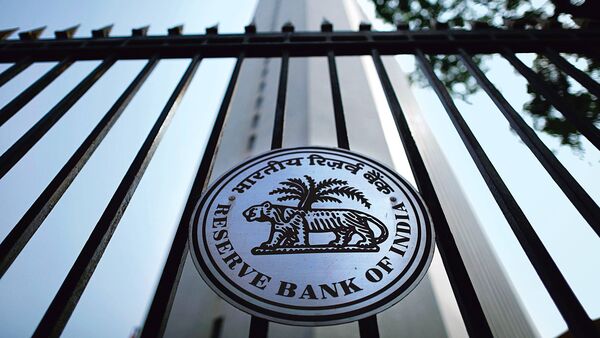The issue is of crucial importance to India as well. In the case of India, price stability is a pressing concern. CPI inflation has been higher than the RBI’s target level of 4% for a while now and in particular, core inflation has been remarkably stubborn at 6% for a long time.
Hence, as the RBI gears up to announce its monetary policy decision on April 6, it needs to retain its focus on lowering CPI inflation to the target level. The Fed may have slowed the pace of rate hikes amid the financial markets turmoil but that should not distract the RBI from prioritising domestic macroeconomic stability and inflation control.
It has been less than a decade since the Reserve Bank of India adopted inflation targeting as its monetary policy framework. Under it, the primary goal of monetary policy is achieving price stability. Expecting monetary policy to also keep an eye on financial stability will distract attention from the central bank’s legally mandated objective and may lead to destabilising outcomes for the economy in general.
There are some practical and conceptual problems in making financial stability an objective of monetary policy.
First of all, it is difficult to define financial stability. We can only see financial sector instability when it manifests, for example, in the failure of a systemically important bank or the bursting of an asset price bubble. But in the absence of such an event, it’s difficult to precisely say what constitutes financial sector stability.
The financial system comprises a large number of participants that interact with each other, creating a complex, interconnected network. Within this system, sources of financial instability can be varied. We have seen financial instability occurring due to the failure of banks, insurance companies, pension funds or mutual funds, and we have seen crises in the stock and bond markets. Ex-ante, it is often difficult to identify the specific part of this vast, complex network where risk is building up.
Also, once there is instability in any part of this network, given the interconnectedness, it can spread through the entire system leading to what is commonly known as ‘contagion’. It is difficult to predict whether an event of financial instability will indeed trigger a contagion, how rapidly the contagion will spread through the system, and what impact it will have on different parts of the network.
Secondly, given that financial stability is difficult to define, it is also hard to measure. Often financial sector regulators use “stress tests” to assess the resilience of the system in various potential scenarios. The problem is they only test for risks that they are worried about. There are many other risks beyond the obvious ones, and those are typically the ones that get financial institutions into trouble.
Monetary policy works best when it has clearly defined objectives and quantitative targets that guide its formulation. Given the challenges of definition and measurement, it is more difficult for monetary policy to target financial stability than price stability, which can be clearly defined and measured.
In India, for example, the inflation targeting framework clearly lays out the goal of the RBI’s monetary policy as achieving a 4% CPI target. Such a clear, quantitative target is inconceivable when it comes to financial stability.
Finally, and most importantly, policymaking must be guided by the Tinbergen principle which conceives of economic policy as the relation between instruments and goals. It stipulates that the number of achievable goals is limited by the number of available policy instruments. Under the inflation targeting framework, the repo rate in India (or the Fed funds rate in the US) must be used to target inflation. It is therefore best to find another tool to address financial stability so that the Tinbergen principle can be applied.
So if monetary policy is not the answer, what can be done to address financial instability?
Some have argued that central banks can inject liquidity to safeguard against financial instability. There are three problems with this. First, injecting liquidity only makes sense when the underlying problem is illiquidity, say an irrational run against a bank with safe but illiquid assets (such as a loan to a profitable factory).
But this is hardly ever the case. Usually, as in the case of SVB, runs occur because banks are insolvent (i.e. the value of their assets has fallen below the value of their liabilities). In such a situation, the only solution is to inject capital. Injecting liquidity can in fact make matters worse because it enables more people to flee the ailing bank(s), thereby increasing – not reducing – panic.
Secondly, liquidity can be a temporary solution in situations involving a credit freeze and may help restore confidence in the system. But it is like calling the fire brigade in the event of a fire. It is needed to douse the fire but does not help prevent future fires.
Third, addressing instability using liquidity may also mean keeping the system flooded with excess liquidity for a long time which in turn may affect price stability.
Broad-based financial stability can be achieved only by improving governance standards and establishing strong supervisory oversight over the concerned institutions to help avoid the build-up of risk. The SVB collapse, like the global financial crisis of 2008, reflected a colossal failure of governance and supervision.
In summary, in the short run, the solution to financial instability is capital; in the long run, it is better governance and supervision. Monetary policy would then be free to pursue its ‘natural target’ – price stability.
Dr. Rajeswari Sengupta is Associate Professor of Economics at Indira Gandhi Institute of Development Research (IGIDR), Mumbai
Harsh Vardhan is a management consultant and researcher based in Mumbai
Download The Mint News App to get Daily Market Updates.
More
Less
#monetary #policy #target #financial #stability
